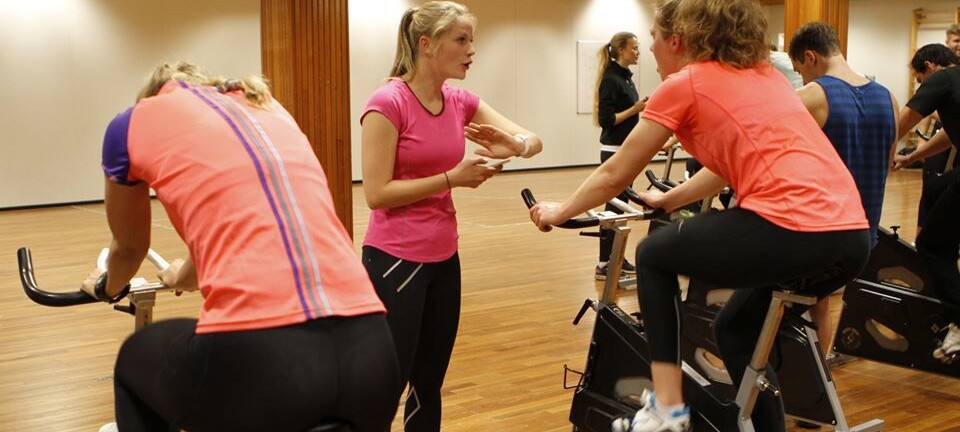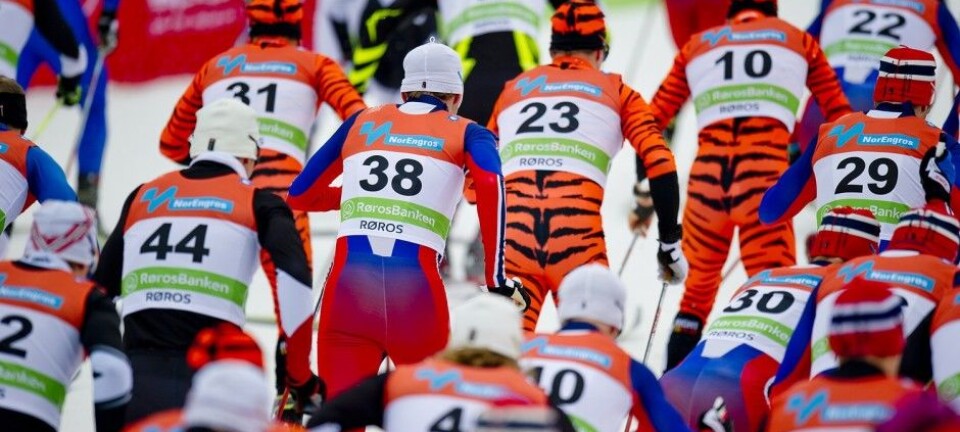This article was produced and financed by The Norwegian School of Sport Sciences - read more
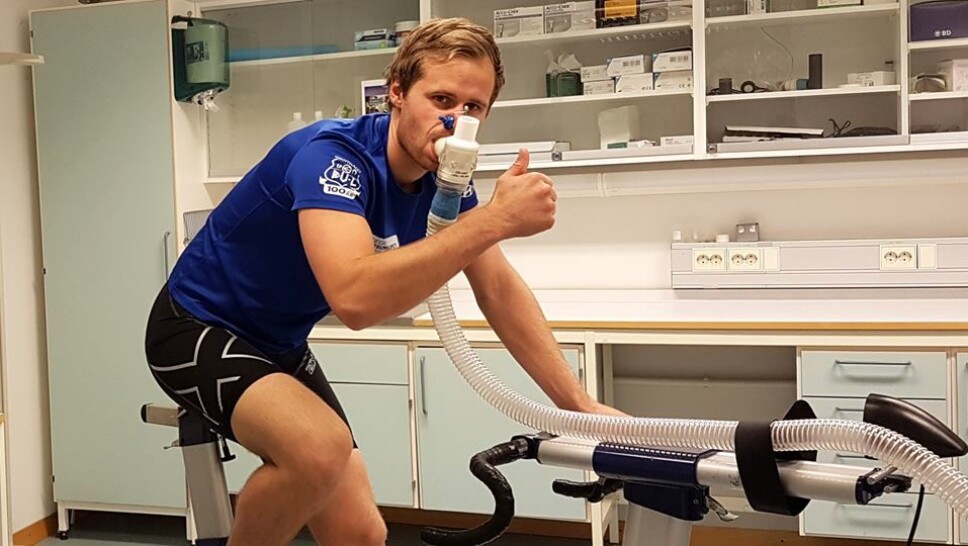
What determines the maximum O2 uptake in the body?
We already know that typical endurance training makes you fitter. But what actually happens in your body when you work to get fitter?
Just consider it: you want to be fitter, have more endurance, maybe run faster or just feel you’re in better shape. You have to work out, probably quite hard, but do you actually know what you have to change inside your body? And what the most important aspects are when it comes to developing fitness?
That was part of what Øyvind Skattebo wanted to examine when he started work on his doctorate at the Norwegian School of Sport Sciences four years ago. He knew the task would be technical and complex, but he took hold of established notions of what determines fitness – or maximum oxygen uptake, as the professionals usually refer to it. As he continued his work, he found out some very important things about how the blood volume, the pumping capacity of the heart and various qualities of the muscles interact and determine maximum oxygen uptake.
The primary question for Skattebo is: What mechanisms cause fitness/maximum oxygen uptake to increase as we work out? And, furthermore, how important are blood volume and the ability of the muscles to extract oxygen from the blood?
And the most important findings are:
- You can increase your maximum oxygen uptake without increasing your blood volume. To date, it was believed that this was necessary.
- This assumes that the body adapts at the same time by increasing the size of the heart and/or improving the cardiac function, for example, regardless of the increase in blood volume.
- If you lose blood suddenly, your body would manage to compensate for this to an extent: 1.5 to 2 dl. But your maximum oxygen uptake is reduced dramatically if you lose more than this.
- You can train your muscles to extract oxygen more effectively from the blood, which involves forming more mitochondria (the «powerhouse» of your cells) and tiny blood vessels (capillaries) in your muscles.
- How well muscles manage to extract oxygen from the blood is more important than anyone had believed to date. Even so, the pumping capacity of the heart is the most important element in maximum oxygen uptake.

Energy and oxygen – a quick lesson
But why is oxygen important? And where do we use the oxygen in the body?
The energy that we get from food cannot be utilised directly in the body. In fact, this energy has to be converted into another substance, ATP, and this process takes place in the mitochondria, which need oxygen.
That is why all human movement (or simply survival, for that matter) requires access to oxygen. And the more intensively you work out, for example, the more energy you use – and your need for oxygen increases accordingly.
This is why the maximum ability to take up and distribute oxygen in the body (the maximum oxygen uptake) is one of the most crucial factors in how good you are in typical fitness sports such as running, cross-country skiing and cycling.
What happens with the oxygen as it makes its way from the lungs to the muscles, where you can use it, is fairly complicated. The air around us contains 21 per cent oxygen, and this is what happens when we have drawn it down into our lungs:
a) The oxygen (O2) crosses into the blood.
b) Oxygen-rich blood is pumped from the heart and around the body.
c) The blood is distributed strategically between the organs and other tissues: When we exert ourselves, we see an increase in the amount of blood to the skeletal muscles (the muscles that are capable of moving the skeleton) and the heart, for example. The brain receives about the same amount as it normally does, and the digestive system receives less than when you rest.
d) The oxygen has to be drawn efficiently from the blood and out into the cells.
e) The mitochondria in the cells use the oxygen to create ATP, a form of energy that is then used in energy-intensive muscle contractions.
This is why the maximum oxygen uptake is affected by the pulmonary function, various characteristics of the blood, the blood volume, the pumping capacity of the heart, the distribution of the blood and the ability of the muscles to take oxygen from the blood.
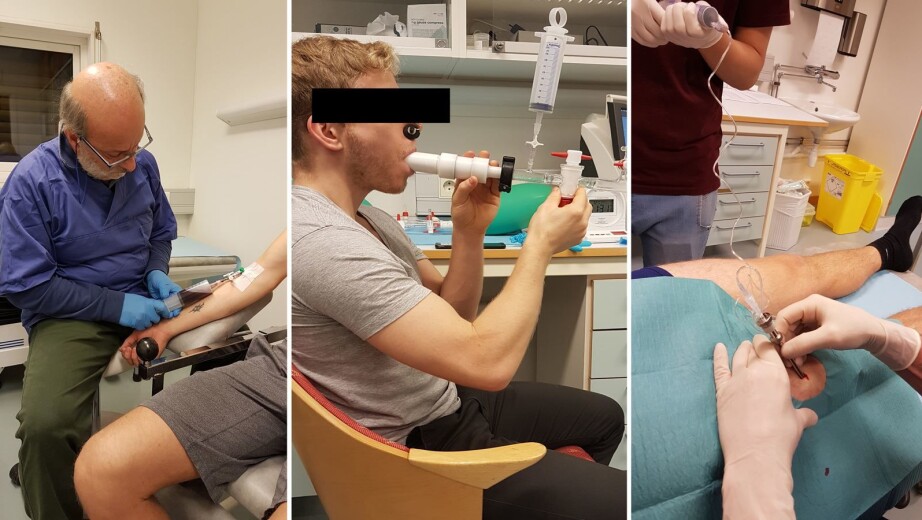
Everything increased
Øyvind Skattebo had to study all of these steps from both inside and outside the body in order to find out just how important each step is. He carried out three experiments and studied the existing research.
In the first study, participants were tested thoroughly both before and after an intensive training period involving both interval training and distance training over 10 weeks. These tests involved measuring their blood volume and their heart size and function by means of echocardiography (an ultrasound examination of the heart). A small sample of muscle (known as a biopsy) was also taken from the thigh muscle. Finally, the maximum oxygen uptake and the heart’s maximum ability to pump blood were tested while the participants cycled intensively on an exercise bike.
These tests showed that both the maximum oxygen uptake and the heart’s maximum pumping capacity had increased by more than 10 per cent throughout the training period. The blood volume, the size of the heart and the number of mitochondria and capillaries in the muscles had also increased.
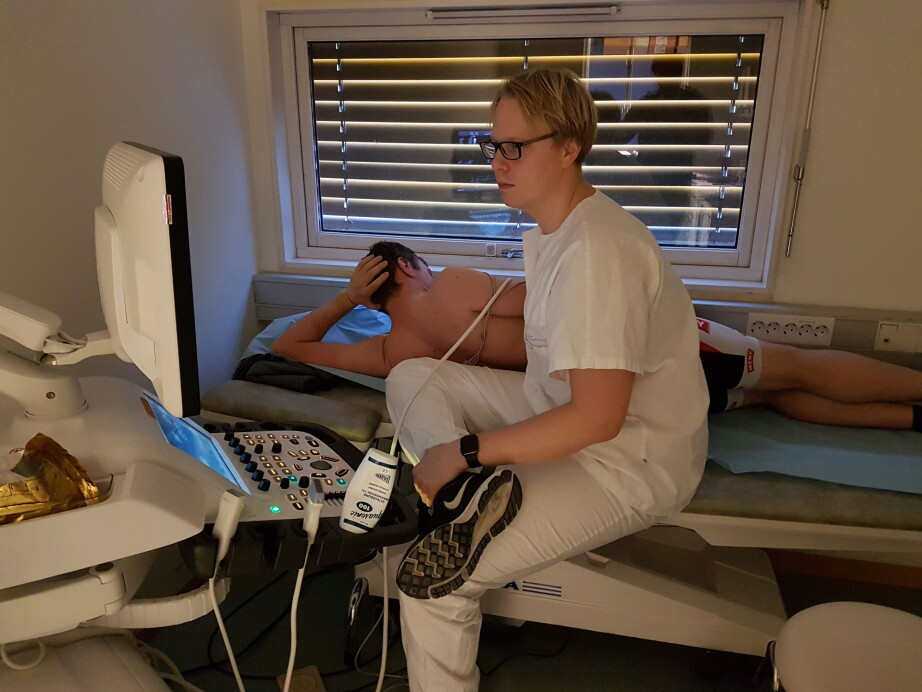
Able to withstand blood loss
«But as so many different things were happening in the body, how did you know what actually increased the maximum oxygen uptake?»
«We worked this out by draining off the increase in blood volume from each individual participant and then retesting their maximum oxygen uptake. We knew how much each individual had increased their blood volume by, so we drained off a corresponding quantity in order to bring them back to 0,» explains Skattebo. «On average, 2 dl of blood was drained from each participant before they were tested on the exercise bike for the third time.»
«But that gave us a surprise. The blood loss had no impact. The participants maintained the effect on both maximum oxygen uptake and the pumping capacity of their hearts. So, their performance was much better than before their training period, even when the blood volume was similar to how it was before they worked out.»
«But surely a person’s blood volume is of some significance?»
«Yes, but the body compensates for a slight sudden blood loss, and this was confirmed in study 2.»
«Here, we compared the effect of losing 1.5 dl of blood with losing 4.5 dl of blood – i.e. the same amount of blood that a blood donor would donate – in another group of participants.»
«We found that the maximum oxygen uptake remained unchanged after the small blood loss, but when we reduced their blood volume by 4.5 dl, the maximum oxygen uptake fell by 7 per cent. So, these studies indicate that it is possible to increase the maximum oxygen uptake by working out without increasing the blood volume, and also that the body is able to withstand a sudden blood loss of around 1.5 to 2 dl. But it goes without saying that performance and maximum oxygen uptake are reduced if you lose a lot of blood!»
One-leg workout
In the third experiment, Øyvind Skattebo and his colleagues studied how the muscles are capable of using the oxygen delivered through the blood, and the extent to which exercise affects this. For this purpose, participants worked on endurance training on just one leg over a period of six weeks.
It turned out that in the exercised leg, the training created 40 per cent more mitochondria and 15 per cent more capillaries compared to the other leg.
They then examined the ability of the muscles to extract oxygen from the blood. After the training period the researchers inserted a catheter in the main vein in each leg and in an artery. This allowed them to take blood samples and measure the oxygen concentration in the blood as it travelled into and out of the legs. This made it possible to study how efficiently an exercised leg and an unexercised leg would use the oxygen on offer.
«The exercised leg and unexercised leg worked as well as each other at low intensity, but we saw a major difference as soon as we increased the intensity. The exercised leg extracted significantly more oxygen from the blood.»
«Surely that was not much of a surprise...?»
«No, but we found out why it happens. In particular, the increase in mitochondria coincided with the increased utilisation of the oxygen delivered via the blood.»
———
Read the Norwegian version of this article at forskning.no








